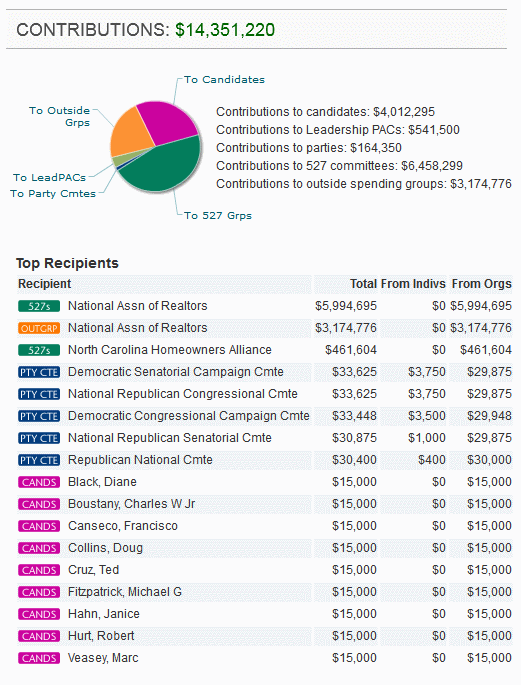The life or death of the mortgage interest deduction (MID) is a perennial Washington, DC soap opera. The prospect of eliminating it is always on the table early in any discussion of budget cuts or of revisions to the tax code yet, like Little Nell on those railroad tracks, a hero in the form of multiple real estate industry lobbying groups, always comes to the rescue.
Yesterday Chief Economist Lawrence Yun penned an op-ed for the National Association of Realtors® (NAR), one of MID's biggest champions, extolling the value of the deduction. In his piece, which appeared on the NAR website, Yun put forth the usual arguments in its favor.
- The tax savings make the costs of carrying a mortgage possible for many families;
- Owning a home means gaining a foothold into the middle class;
- Unlike the rich who whose wealth is tied to other investments, that of most middle-class Americans is tied to their homes;
- The nation's homeowners already pay 80 to 90 percent of U.S. federal income tax
- Eliminating the MID at a time when the housing recovery is just gaining a solid footing could slow sales, lower prices, and erode much of the wealth that has recently been recovered through home equity;
- Home sales account for about 2.5 million American jobs.
Actually the fate of MID has come up only sporadically in recent months as tax reform has been overwhelmed by other capital madness but the Ryan Budget did recently resurface. The pre-2012 election analysis of that budget, and Ryan's plan to offset the massive high-earner tax credits it contains, always brought up a prominent group of what are called "tax expenditures," that is tax credits and deductions. MID is the second largest of these (after the exclusion of employer paid health care from earned income calculations) and is projected to cost the government $113 billion in 2015.
With budget battles about to get even more intense, this is a timely reminder on an issue that's likely to come up in coming weeks. Is the gathering storm reason enough to trigger Yun's entreaties? Probably. Or maybe there is something else going on behind the scenes that the rest of us are not aware of - but insiders are. And there is no bigger Washington insider than NAR.
While its membership declined following the housing crash it is recovering and NAR refers to itself as one of the largest trade associations in the U.S., representing one million members in the real estate industry. Its maintains an advocacy staff of 39 with most having responsibility for several of some 80 regulatory, tax, environmental or credit related issues in which the association has an interest.. These range from the Affordable Housing Trust Fund, bankruptcy and estate tax, and credit reform to Qualified Mortgages and visas for seasonal workers.
NAR's advocacy includes tracking legislation, giving testimony to House and Senate committees, writing letters to members of Congress and various government agencies. And money. Lots and lots of money.
Open Secrets.org (the Center for Responsive Politics), which tracks lobbyists and political action groups says that NAR is one of the biggest spenders on industry advocacy and made one of the biggest increases in that spending in 2012. In mandatory reports filed with the House and Senate, NAR and its subsidiary the California Association of Realtors® said it spent $41.5 million on lobbying in 2012, a new record and 19 million more than it spent in 2011. It has spent $17.68 million thus far in 2013.
NAR contributed over $14 million to political candidates in 2012 to rank 13th out of 21,002 donors tracked by Open Secrets and did $8.2 million in outside political spending. Contributions to members of the House and Senate ranged from $15,000 given to each of eight members of the House and one senator and $10, which we would guess was the equivalent of a lump of coal, given to eight senators and one representative. Open Secrets classifies NAR as a "fence straddling" contributor but it appears that more of the larger donations went to Republicans than Democrats.
Of course NAR isn't the only heavy hitter in the industry, though the others are far down the list. The National Association of Home Builders spent $2.37 million on lobbying to rank 236 out of 4369 registered lobbyists and contributed 3.42 million to candidates to rank 87th among contributors. A 2012 search didn't garner information on the Mortgage Bankers Association but it has spent 1.7 million on advocacy thus far in 2013.
The bottom line is this: money talks in Washington. With a million members and $42 million to spend NAR is definitely a political force. Given its stated objection to any repeal of the MID, chances are good it will be around for a while.








